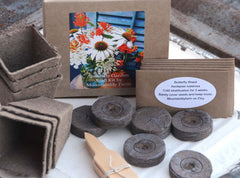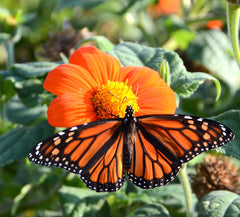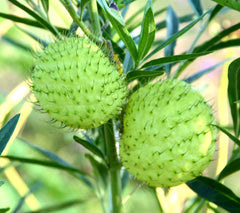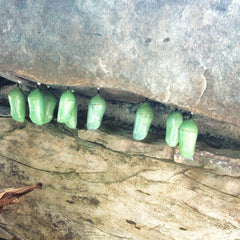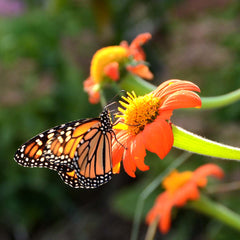Creating a garden habitat to encourage butterflies is easy and fun. Butterflies provide color, movement, and pollination for our gardens. Butterfly gardens should contain plants that provide nutrients to the larvae and caterpillars as well as nectar plants for the adults. Colorful annuals such as zinnias and Mexican sunflowers are easy to grow from seed in a wide range of growing conditions.
Several herb plants are great host plants for swallowtail butterfly larvae. I grow fennel, dill and parsley to feed the caterpillars. I find the caterpillars prefer the curled parsley over the flat leaf variety. I always plant extras as the feeding caterpillars can wipe out an entire parsley plant in a day. Monarch caterpillars will feed on a variety of Milkweed 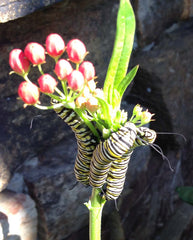
plants and also quickly devour all foliage. The orange, native perennial Milkweed Asclepias tuberosa is beautiful and easy to grow in sunny well drained soil. There are several varieties of Tropical Milkweeds that will also bring color and butterflies into the garden. There has been some controversy over these varieties of Milkweed as some are reseeding in warmer areas and changing migration patterns for the Monarchs. In warm areas where the plants are not killed by winter frost the plants can contain a fungus that is detrimental to the butterflies. Plants should be removed at the end of each growing season. I grow Tropical Milkweeds but they die completely at first frost. These are very easy to grow from seed and are colorful additions to the garden. One Milkweed variety is known as Hairy Balls or Family Jewels Milkweed. It is sure to get a reaction from any of your garden visitors.
All of the varieties of Milkweed will feed the caterpillars as well as provide nectar for the adults. Once the caterpillars have fed they will crawl off and find a suitable place to form chrysalis.
Once the butterflies have emerged they will seek out bright, colorful nectar rich plants. Zinnias are one of the easiest to grow from seeds and are a favorite of many varieties of butterflies. Bright Tithonia, Mexican Sunflowers, are also easy to grow in most soil types.
Butterflies are also attracted to many of the plants I grow in my herb garden. Small butterflies known as skippers love the Hyssop and Lavenders in the garden. I also grow Lemon Bergamot for it's wonderful fragrance and the swallowtails love the flower spikes.
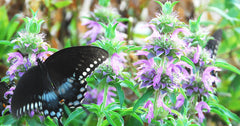
I garden organically and without chemicals to encourage all beneficial insects in my garden. Learning the good bugs from the bad bugs is very important to maintain a healthy garden. Walking the garden and checking the plants daily is the best way to stay on top of any potential pest problems. I had a new caterpillar last summer and was unsure whether it was friend or foe. A quick Google search showed me that it was a Milkweed Tussock Moth feeding on the Hairy Balls Milkweed and a beneficial insect.

I have created a Butterfly Garden Kit which contains seeds for several of these plant varieties. I also include very detailed growing instructions for even the most beginner gardener. This kit is available in the Gifts For Gardeners Collection on the Home Page.
